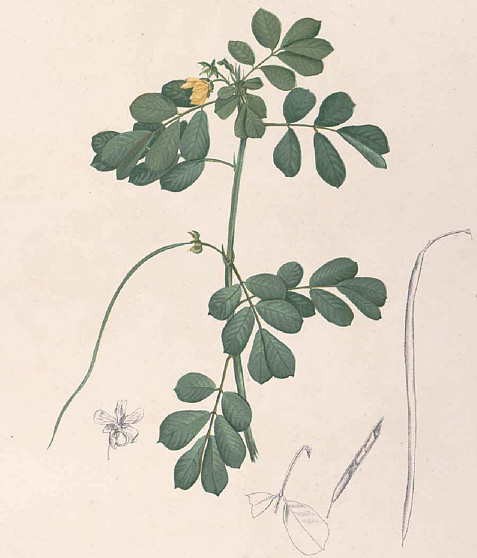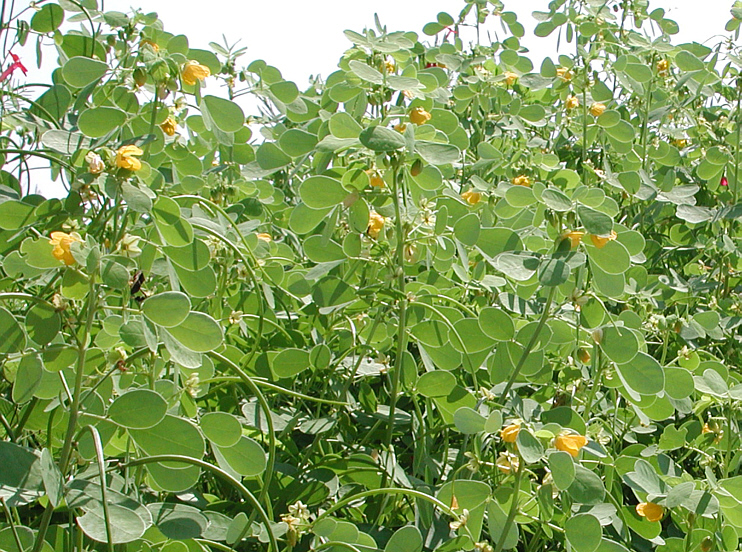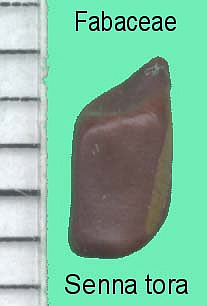

Zitierweise / cite as:
Carakasaṃhitā: Ausgewählte Texte aus der Carakasaṃhitā / übersetzt und erläutert von Alois Payer <1944 - >. -- Anhang A: Pflanzenbeschreibungen. -- Senna tora (L.) Roxb. -- Fassung vom 2007-07-13. -- URL: http://www.payer.de/ayurveda/pflanzen/senna_tora.htm
Erstmals publiziert: 2006-07-13
Überarbeitungen:
Anlass: Lehrveranstaltung SS 2007
Dieser Text ist Teil der Abteilung Sanskrit von Tüpfli's Global Village Library
WARNUNG: dies ist der Versuch einer
Übersetzung und Interpretation eines altindischen Textes. Es ist keine
medizinische Anleitung. Vor dem Gebrauch aller hier genannten Heilmittel wird
darum ausdrücklich gewarnt. Nur ein erfahrener, gut ausgebildeter ayurvedischer
Arzt kann Verschreibungen und Behandlungen machen!
Falls Sie die diakritischen Zeichen nicht dargestellt bekommen, installieren Sie eine Schrift mit Diakritika wie z.B. Tahoma.
Verwendete und zitierte Werke siehe: http://www.payer.de/ayurveda/caraka0001.htm

Abb.: Senna tora (L.) Roxb.
[Bildquelle. Wikipedia]

Abb.: Senna obtusifolia (L.)
H.S.Irwin &
Barneby = Senna tora (L.) Roxb.
[Bildquelle. Wikipedia]

Abb.: Samen von Senna tora (L.) Roxb.
[Bildquelle:
http://www.oardc.ohio-state.edu/seedid/single.asp?strID=438. -- Fair use]
Drury:
"Cassia tora (Linn.) Do. Tagara, Mal. Tageray, Tagashay, Tam. Tantipu, Tel. Chakoonda, Beng.
Description.—Annual, with spreading branches; leaflets 3-pairs, with a gland between the 1-2 lower pairs, but without any between the uppermost, cuneate-obovate, obtuse, glabrous or pubescent on the under side ; flowers on long pedicels, upper ones forming a short terminal raceme, lower ones 1-2 together on a short axillary peduncle; upper petals obcordate; legumes very long, sharp-pointed, 4-sided, many-seeded, each suture two-grooved; flowers small, yellow. Fl. Oct.—Jan.—W. & A. Prod. i. 290.—Senna tora, Roxb. Fl. Ind. ii. 340, var. b.—C. tagera, Lam. (not Linn.)—Senna toroides, Roxb.—Rheede Mal. ii t. 53.-------Peninsula.
Medical Uses.—The leaves, which are mucilaginous and have a disagreeable odour, are given in decoction as aperients to children who suffer from fever while teething. Fried in castor-oil they are applied to ulcere : the seeds ground and mixed with buttermilk are used to allay irritation in itchy eruptions. The root rubbed with lime-juice is a good remedy for ringworm. The leaves are often employed for making warm poultices to hasten the suppuration of boils. The seeds are used in preparing a blue dye, generally fixed with lime-water. The leaves rubbed are applied to parts stung by bees.— (Rheede. Ainslie.) A warm remedy in gout, sciatica, and pains in the joints. The leaves are used to adulterate Senna, but are known by their wedge - shaped and ciliated margins. — Powell's Punj. Prod."
[Quelle: Drury, Heber <1819 - 1872>: The useful plants of India : with notices of their chief value in commerce, medicine, and the arts. -- 2d ed. with additions and corrections. London : Allen, 1873. -- xvi, 512 p. ; 22 cm. -- s.v.]